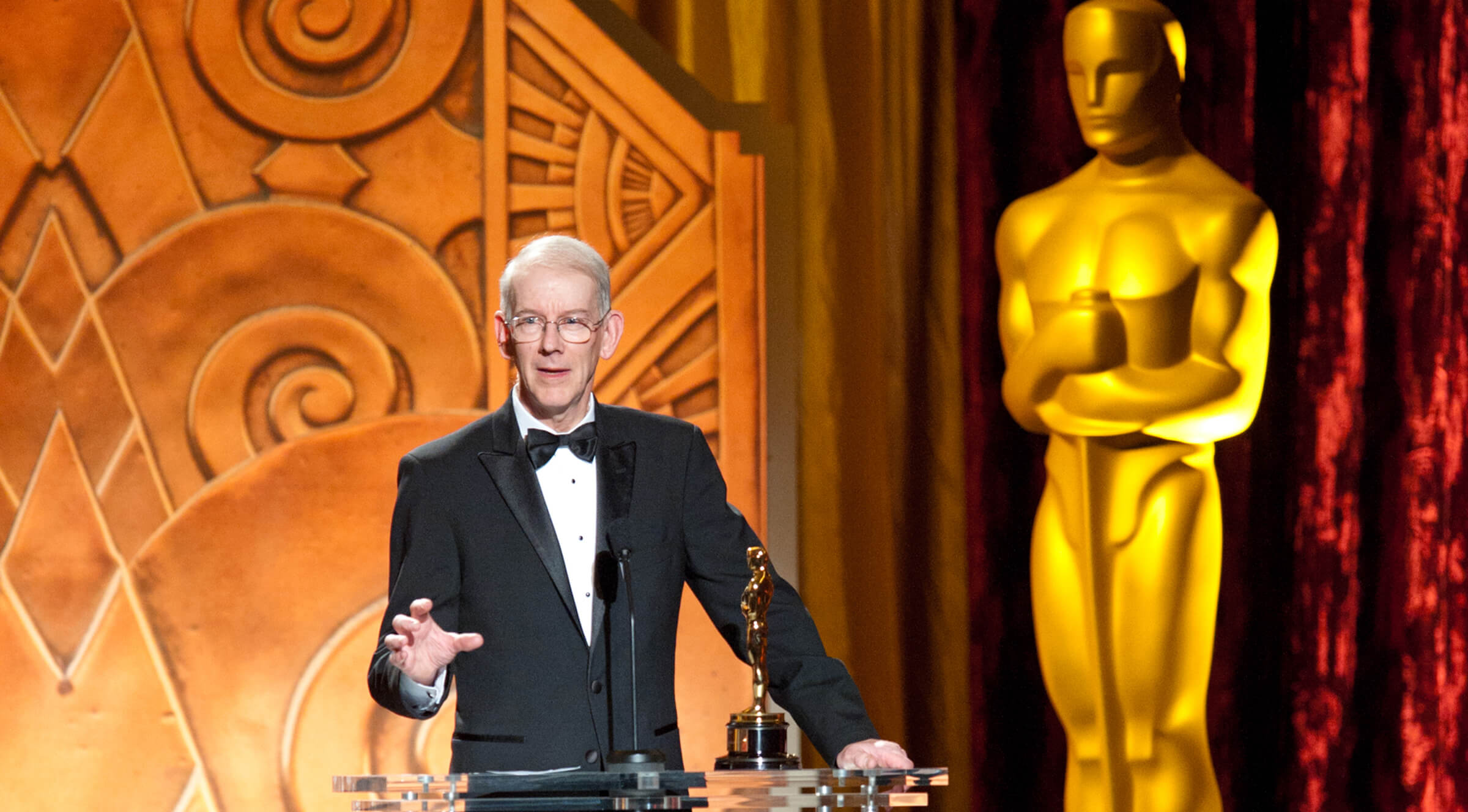An Appreciation
A film collector since the age of eleven, the British-born Kevin Brownlow is responsible in large part for the revival of silent-film art around the world. Brownlow’s tireless sleuthing has led to the rediscovery of many of Hollywood’s silent-film landmarks, including Intolerance, The Thief of Bagdad, The Crowd, Sunrise: A Song of Two Humans, and Ben-Hur (playing at this year’s festival); “small films” no less interesting or significant, such as Cecil B. DeMille’s The Godless Woman and Paul Leni’s The Cat and the Canary; as well as Abel Gance’s dismembered Napoleon, which Brownlow spent almost half a century returning to its triple-screen splendor. His exhaustive research and thorough interviews with surviving silent film artists in the 1950s and 1960s—just in the nick of time—resulted in the publication of several indispensable tomes of film history, beginning with The Parade’s Gone By, which collects for all time first-person testimony of or about familiar giants like Gance, King Vidor, and Mary Pickford, the largely forgotten like directors Edward Sloman, Allan Dwan, and Dorothy Arzner, bygone stars like the soulful Louise Dresser, and little known cast and crew, including cameraman Charles Rosher and editor Margaret Booth, who played their crucial parts in film history. There’s still enough material in that nearly fifty-year-old book to spawn countless new research projects.
In addition, Brownlow has directed his own fiction films (It Happened Here and Winstanley) and several British television documentaries on the likes of Garbo, Keaton, and DeMille, as well as his epic series on the silent era, Hollywood, which deepens our understanding of classic cinema. He set up Photoplay Productions in early 1990 with producing partners, the late David Gill and Patrick Stanbury, and through this company continues to find, restore, and release silent-era gems. For these efforts and more, the American Academy of Motion Pictures Arts and Sciences selected him in 2010 for an honorary award, given specifically for “the wise and devoted chronicling of the cinematic parade.”
Brownlow, however, is no mere monument. Talk to anyone who’s worked with him and you’ll hear a similar refrain. Yes, he’s knowledgeable—“his presence in the room feels to me like a guarantee of quality” one colleague says. But he’s also generous—“he sends Xeroxes to reinstate his points through written sources.” Curious—“when Kevin is around, there is always something grand at stake.” And, inspiring—providing “the constant presence,” of what one archivist called, “the pleasure of watching.” San Francisco Silent Film Festival board president Robert Byrne talked to a host of international archivists and colleagues and collated a long list of tributes to Brownlow that reveal the man behind his impressive accomplishments.
Longtime friend David Robinson, now director of the thirty-five-year-old Giornate del Cinema Muto, recalls that when he was fourteen Brownlow invited him to his room to watch Napoleon, at that time only seventy-five minutes long, and Robinson began his love affair with silent movies. Thomas Christensen talks about the time he ran the Danish Film Institute’s nitrate print of that same film on a flatbed for Brownlow and, on seeing the German intertitles, watched Brownlow’s eyes widened in wonder at the thought that the print might have belonged to Hitler. Utretcht University’s Frank Kessler recalls seeing a Photoplay documentary on Charles Chaplin, which explored the filmmaker’s creative process, and being struck by his “whole new way of doing film history.” Nicola Mazzanti of the Cinémathèque Royale de Belgique describes Brownlow’s vulnerability to the films themselves, his profound appreciation of silent cinema’s “sense of sheer beauty.” Paula Félix-Didier of Museo del Cine in Buenos Aires once knocked on the door of Photoplay Productions in London, unknown and unannounced, to ask questions about silent film, and Brownlow immediately invited her in for tea.
Lobster Films’ Serge Bromberg paints the most vivid picture of Brownlow’s contribution, giving us an image worthy of a film lover: “Doctor Frankenstein of lost film.” Hunting down parts from all corners, even the darkest, dankest ones, stitching them together until they are (mostly) whole, and maybe even a little bit mad, Brownlow is the archetypal film collector who finds something, fixes it up, and then shares it with the world. Yes, it needs to be found, reconstructed, and saved, but Brownlow also knows it needs to be seen—not only so the films he’s helped rescue from the heap once again sparkle on the movie screen, but also so others in the audience are inspired to continue the work. The tributes Byrne collected can be read in full on the Silent Film Festival website. Here, the man himself has the last word, in the form of advice he once gave to an aspiring archivist named Mike Mashon, now at the Library of Congress: “to see and read all I could and never lose my youthful enthusiasm for the art form.” With Brownlow’s example to follow, who ever could?

